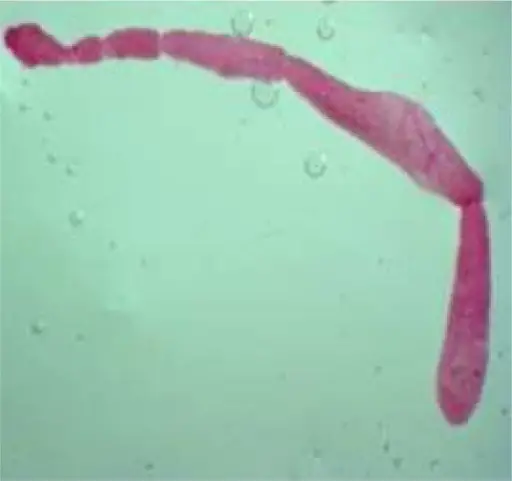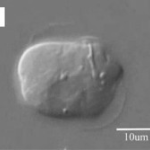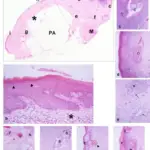Hydatid disease is a form of echinococcosis caused by the development of hydatids of a tapeworm of the genus Echinococcus.
What is the Pathology of Hydatid Disease?
The pathology of hydatid disease is:
-Etiology: The cause of hydatid disease is the larval stage of Echinococcus granulosus.
-Genes involved: Not applicable.
-Pathogenesis: The sequence of events that lead to hydatid disease are: The egg larvae invade the bowel wall and mesenteric vessels of the host, and then circulation to the liver. In the liver, the larvae grow and become encysted. The hydatid cyst develops an outer layer of inflammatory tissue and an inner germinal membrane that produces daughter cysts.
-Morphology: The morphology associated with hydatid disease shows three different developmental stages: eggs; larvae; and adults.
-Histology: The histology associated with hydatid disease shows granulomatous palisading reaction and pseudocyst formation as seen in cutaneous lesions.
How does Hydatid Disease Present?
Patients with hydatid disease typically are all genders at all ages. The symptoms, features, and clinical findings associated with hydatid disease include blood or the fluid from a ruptured cyst, cough, weakness, weight loss, diarrhea, stomach upset, abdominal pain, and anemia.
How is Hydatid Disease Diagnosed?
Hydatid disease is diagnosed by ultrasound, CT-scan, MRI, ELISA or immunoblotting.
How is Hydatid Disease Treated?
Hydatid disease is treated by percutaneous treatment of the hydatid cysts with the PAIR technique, surgery, and albendazole therapy.
What is the Prognosis of Hydatid Disease?
The prognosis of hydatid disease is good. It is a potentially serious but treatable infection that may be fatal in a small number of cases.



